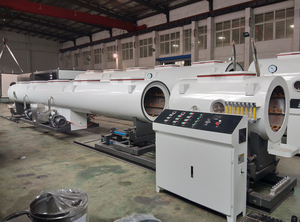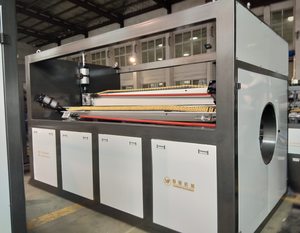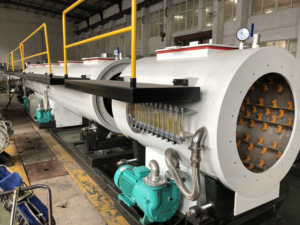
All categories
Featured selections
Trade Assurance
Buyer Central
Help Center
Get the app
Become a supplier

(6304 products available)













































The main types of rotating irrigation systems are rotating lawn sprinklers and rotating drip irrigation systems.
Rotating lawn sprinklers:
Rotating lawn sprinkler heads are used in residential and commercial lawns and gardens. They are designed to cover a specific area with water. The sprinklers have adjustable arcs and distances. This allows users to customize the coverage to fit their lawn size and shape. Some advanced models have automatic sensors that detect soil moisture levels and adjust the watering schedule accordingly. This prevents overwatering and conserves water.
Rotating drip irrigation systems:
Rotating drip irrigation systems combine the benefits of rotating sprinklers and drip irrigation. This system delivers water to plants through rotating sprinkler heads attached to drip lines. The drip line delivers water directly to the plant roots. This keeps the soil moisture level consistent. The rotating action of the sprinkler head distributes water over a wider area. This is ideal for gardens and landscapes with different plant types and sizes.
Flexibility
Flexibility is a key design aspect of rotating irrigation systems. These systems can be designed to fit different land shapes and sizes. For example, the rotating irrigation system for gardens can be adjusted for rectangular, square, or circular gardens. Similarly, large farms and golf courses can use large rotating sprinklers or center pivot irrigation. This flexibility allows for efficient water use and can be adapted as plants grow or seasons change.
Modularity
Modularity is another important design aspect. Rotating irrigation systems are made in modules, which means they can be easily added to or changed without disrupting the entire system. If a farmer wants to irrigate a larger area, they can just add more modules without replacing everything.
Scalability
The scalability of rotating irrigation systems allows them to be used in both small and large areas. Small gardens may need only a few rotating sprinklers, while large farms can benefit from extensive center pivot systems. This design aspect means that as irrigation needs grow, the system can be expanded without a complete overhaul, saving time and money.
Automation and control
Modern rotating irrigation systems include automation and control features, making them easier to use and more efficient. Automated timers and sensors can detect when plants need water and turn the system on or off accordingly. This prevents overwatering or underwatering, promoting healthier plants and conserving water.
Durability
Durability is an essential design aspect, especially for systems used in harsh weather or tough environments. Quality materials are used to withstand sun, wind, and rain. Well-designed parts reduce the need for repairs and replacements, saving long-term costs.
Ease of maintenance
Rotating irrigation systems are designed to be easily maintained. This means checking and cleaning parts are straightforward, ensuring the system runs efficiently. Easy maintenance is crucial for keeping the system's longevity and performance, which can impact water conservation and energy efficiency.
Energy efficiency
Energy efficiency is a vital aspect of rotating irrigation system design. Efficient systems require less energy to operate, reducing energy costs and environmental impact. For example, gravity-fed systems use natural water flow, while solar-powered pumps harness solar energy in off-grid areas.
Water conservation
Water conservation is a critical design aspect of rotating irrigation systems. Systems are designed to minimize water waste and ensure water reaches where needed. Drip irrigation, for instance, delivers water directly to plant roots, reducing evaporation and runoff. Sprinkler systems distribute water over a wide area but can be controlled to prevent overwatering.
The rotating irrigation system is a versatile tool that can be employed in various industries and settings. Its ability to provide efficient and controlled watering makes it suitable for different scenarios. In the agricultural sector, the rotating irrigation system is extensively used in large-scale farms to irrigate crops. It ensures even distribution of water over the farmland, promoting healthy growth of plants and maximizing agricultural yields. Whether it is a fruit orchard, vegetable farm, or grain field, the rotating irrigation system meets the water requirements of different types of crops.
In the horticulture industry, gardeners and landscapers utilize the rotating irrigation system to maintain their gardens and landscapes. It helps in watering flowers, shrubs, and lawns, keeping them green and healthy. Moreover, the system is also applied in turf management for golf courses and sports fields. It provides water to the grass and turf, ensuring they are well-watered and resilient for play.
The rotating irrigation system is not limited to the agricultural sector alone. It can also be used in the commercial sector. For instance, in the nurseries and greenhouses, owners utilize the rotating irrigation system to water their plants and seedlings. Additionally, the system can be employed in the vineyards and orchards, assisting in watering fruits.
Furthermore, the rotating irrigation system can be utilized in the industrial sector. Factories and manufacturing units can take advantage of the system to cool down their machines and equipment. It is also applicable in construction sites where dust suppression is required. The rotating irrigation system can wet the dust, preventing it from spreading.
Moreover, the system can be employed in mining operations as well. In the mineral extraction industry, the rotating irrigation system can be used for ore washing. It helps wash away impurities and provides water for the separation process.
In short, the rotating irrigation system has a broad application. It is capable of meeting the watering needs of different industries and scenarios, providing an effective solution for water supply.
When choosing a rotating irrigation system, users need to consider the following factors to ensure that the selected system meets their watering needs efficiently and effectively:
Field size and shape
The size and shape of the field are essential factors to consider when choosing a rotating irrigation system. Different systems are designed to accommodate various field sizes, ranging from small gardens to large agricultural plots. For instance, a small garden may benefit from a drip irrigation system or a stationary sprinkler system, while a large field would require a center pivot or big gun irrigation system. Additionally, the shape of the field can impact the distribution of water, so it's crucial to select a system that ensures even coverage throughout the entire area.
Water source and pressure
The water source and its pressure play a significant role in determining the suitability of a rotating irrigation system. Some systems operate efficiently with gravity-fed water sources, while others require pressurized water from pumps. Moreover, the water pressure affects the system's performance, including the distance and height at which water can be sprayed. Therefore, it's vital to assess the water source and measure the water pressure to choose an irrigation system compatible with the available water supply.
Type of crops or plants
The type of crops or plants being irrigated should also be considered when selecting a rotating irrigation system. Different crops have varying water requirements, with some demanding more water and others needing less. For example, vegetable crops generally require frequent and even watering, while drought-tolerant plants can withstand dry spells. Additionally, the growth stages of crops influence their irrigation needs, as young plants typically require more water to establish their roots. Hence, choosing a system that can be adjusted to meet the diverse watering needs of different crops is crucial.
Energy efficiency
Energy efficiency is a vital consideration when selecting a rotating irrigation system. Some systems, such as drip irrigation, consume less energy as they deliver water directly to the roots of plants, minimizing the need for pumping water over long distances. Moreover, energy-efficient systems reduce the operational costs of running pumps and motors, resulting in long-term cost savings for farmers or gardeners. Additionally, energy-efficient systems are environmentally friendly as they lower greenhouse gas emissions associated energy production. Therefore, choosing an irrigation system that consumes less energy is crucial for both economic and environmental benefits.
Q1. What are the benefits of a rotating irrigation system?
A1. They ensure uniform watering, conserve water, reduce labor costs, and can be adjusted for different crops.
Q2. What power sources are available for rotating irrigation systems?
A2. They can be powered by electricity, diesel, hydraulics or wind for standalone systems.
Q3. What types of crops are suitable for rotating irrigation systems?
A3. They are commonly used for field crops like corn, wheat, and potatoes, but some are also suitable for fruits and vegetables.
Q4. How do soil types affect the choice of rotating irrigation systems?
A4. Sandy soils may require frequent rotation with light applications, while clay soils need slower systems with heavy applications.
Q5. What are the maintenance requirements for a rotating irrigation system?
A5. Regular checks on machinery, repairs on damaged parts, cleaning of nozzles and filters as well as ensuring water supply lines are intact are essential.